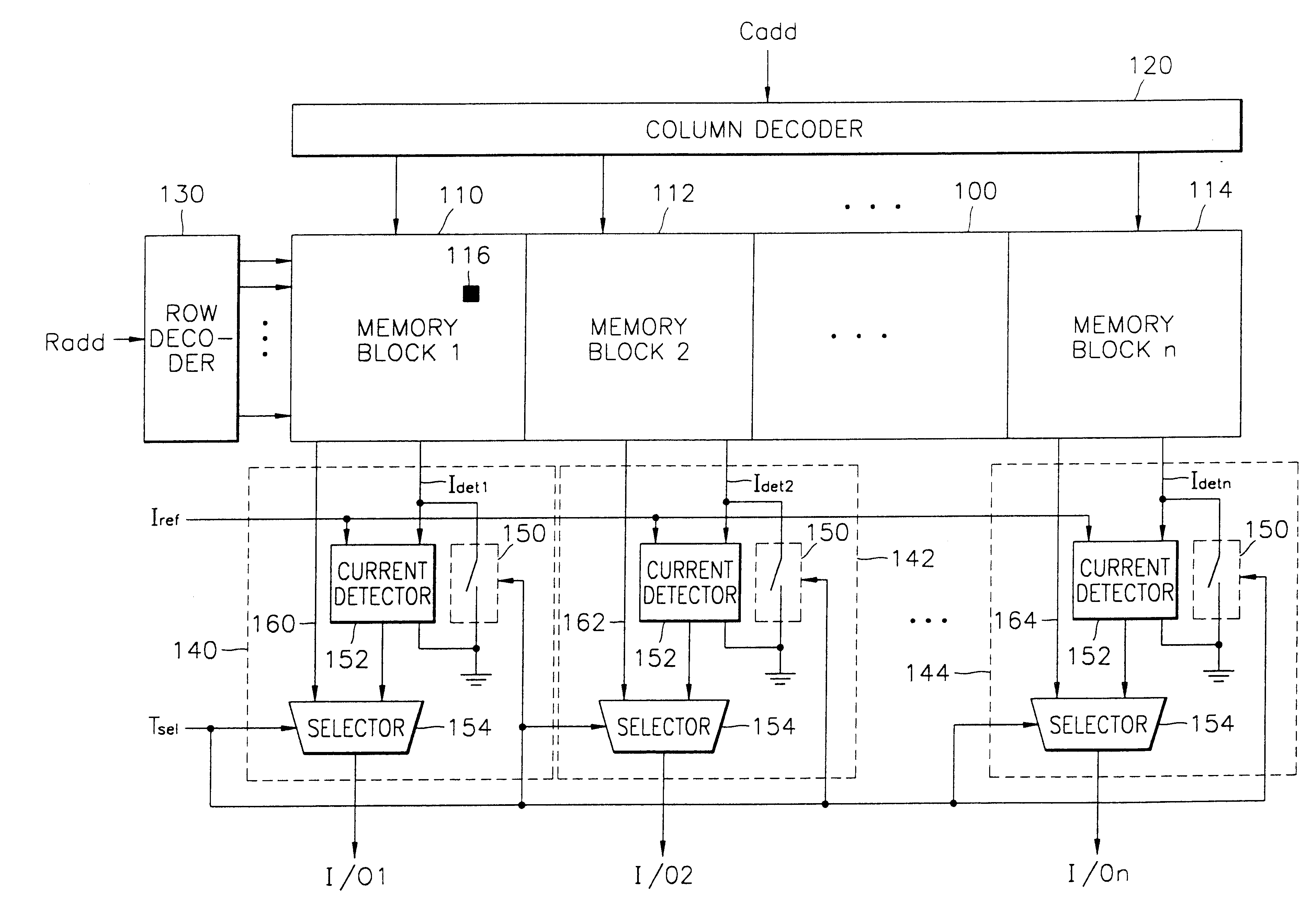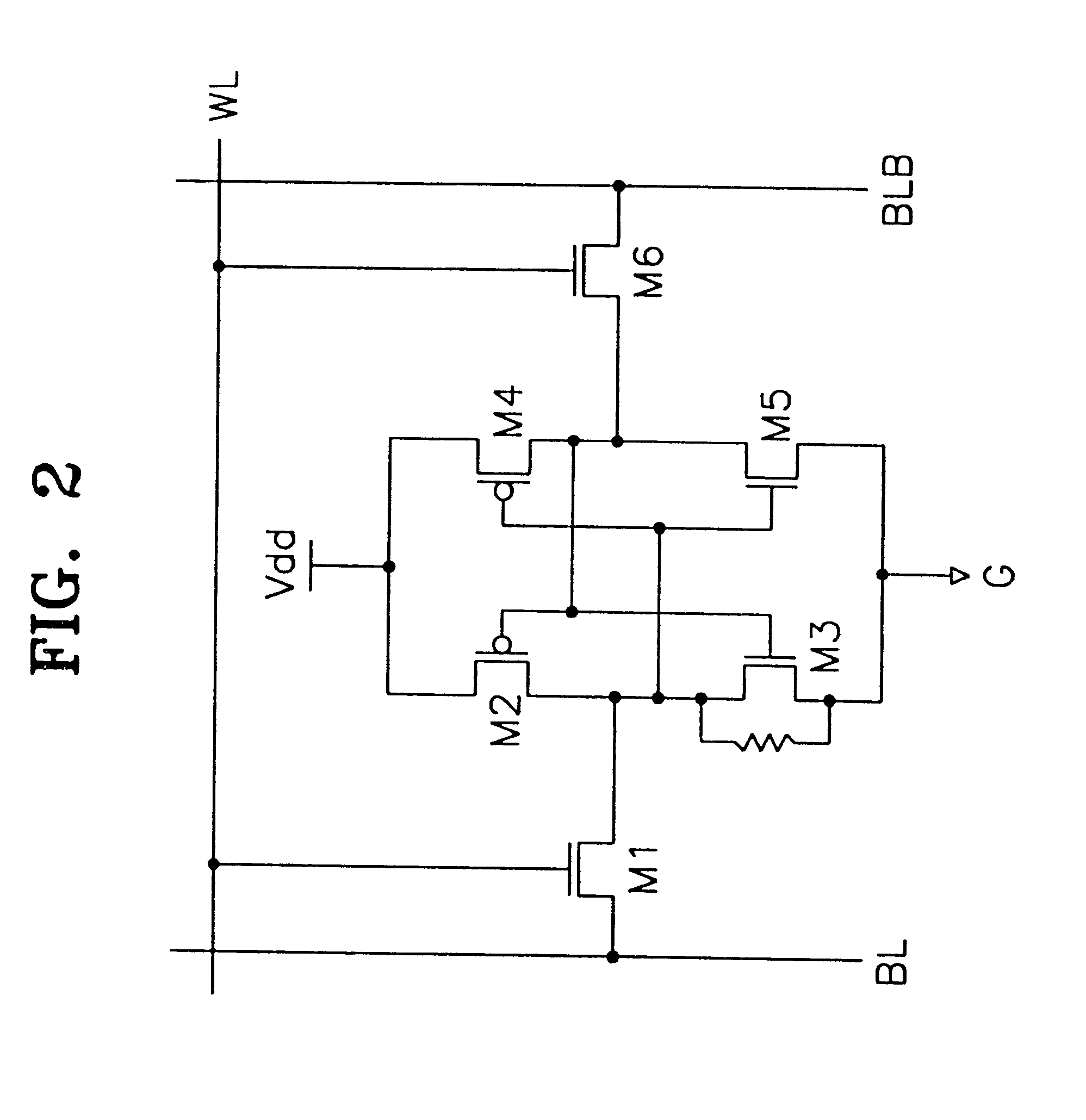Apparatus and method for detecting faulty of cells in a semiconductor memory device
a technology of semiconductor memory and apparatus, applied in the direction of digital storage, electronic circuit testing, instruments, etc., can solve the problems of increasing the layout area of the tested chip, difficult to detect parametric faults or transients, and affecting the normal operation of the chip
- Summary
- Abstract
- Description
- Claims
- Application Information
AI Technical Summary
Problems solved by technology
Method used
Image
Examples
Embodiment Construction
The present invention now will be described more fully with reference to the accompanying drawings, in which preferred embodiments of the invention are shown. FIG. 1 contains a schematic circuit diagram which shows an apparatus for detecting faulty cells in a semiconductor memory device according to an embodiment of the present invention. The apparatus for detecting faulty cells according to the present invention includes a memory cell array 100 which includes a plurality of memory blocks 110 through 114, a column decoder 120, a row decoder 130, and a plurality of faulty cell detectors 140 through 144.
Referring to FIG. 1, the memory cell array 100 includes the plurality of memory blocks 110 through 114. Each of the memory blocks 110 through 114 includes a plurality of memory cells 116. A memory cell is addressed in each of the memory blocks 110 through 114, corresponding to a predetermined memory address consisting of a column address Cadd and a row address Radd. That is, if the mem...
PUM
 Login to View More
Login to View More Abstract
Description
Claims
Application Information
 Login to View More
Login to View More - R&D
- Intellectual Property
- Life Sciences
- Materials
- Tech Scout
- Unparalleled Data Quality
- Higher Quality Content
- 60% Fewer Hallucinations
Browse by: Latest US Patents, China's latest patents, Technical Efficacy Thesaurus, Application Domain, Technology Topic, Popular Technical Reports.
© 2025 PatSnap. All rights reserved.Legal|Privacy policy|Modern Slavery Act Transparency Statement|Sitemap|About US| Contact US: help@patsnap.com



